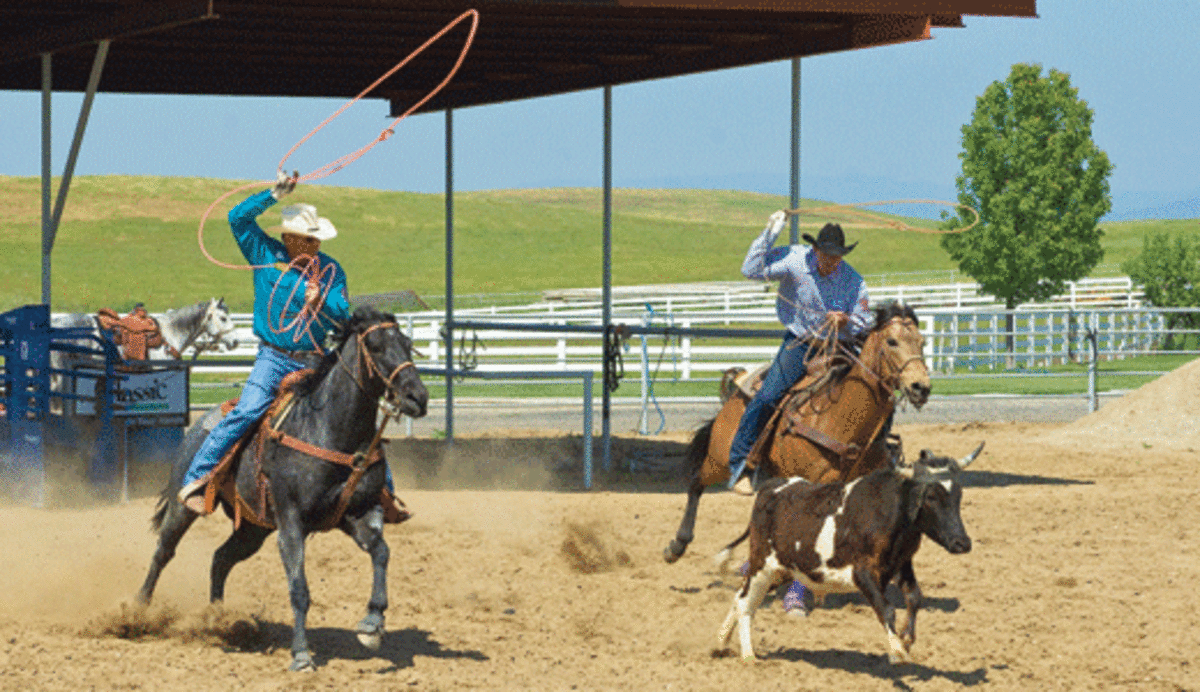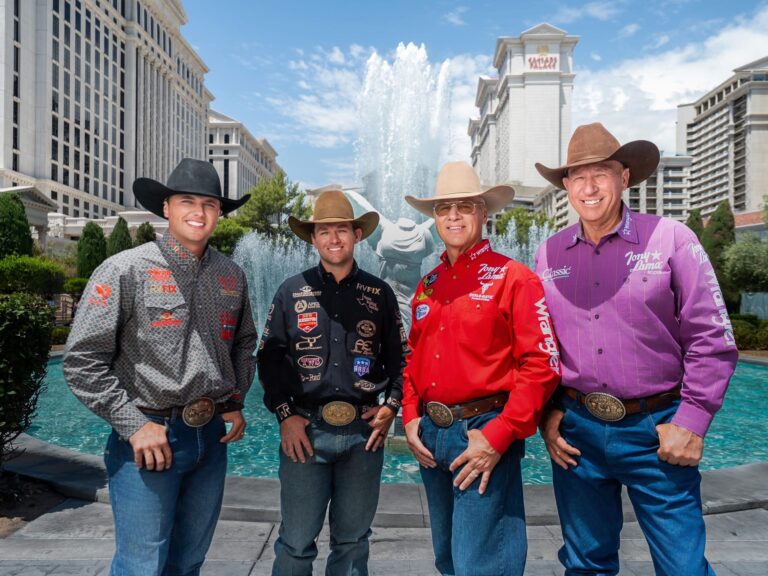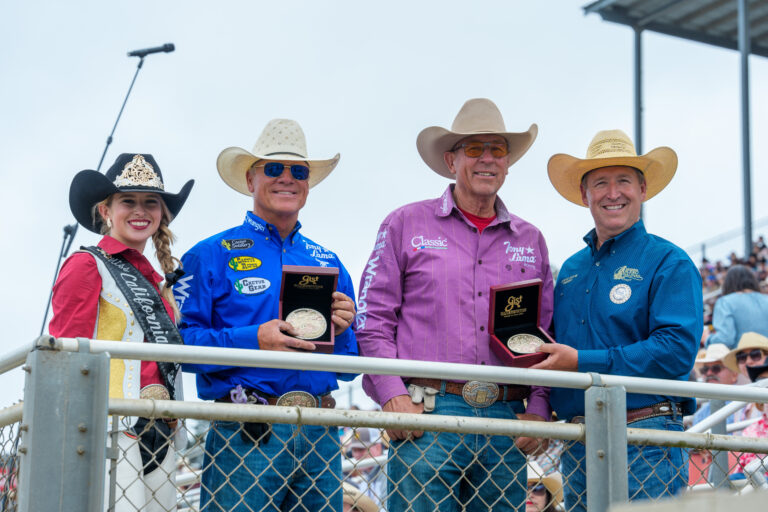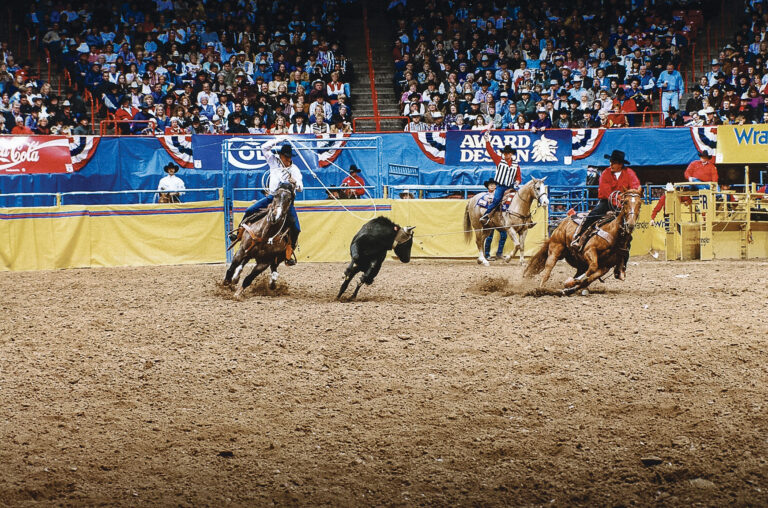When I rope I have a game plan for what I’m going to do, whether I’m going to try to make a fast run or a solid run. It would be ideal to have the same shot every time so you could bank on muscle memory, but we don’t have that luxury because the circumstances are always different. The arena conditions, the score and the steer all factor in to how each run unfolds. The fundamentals of team roping are pretty basic, really. The header has to get out of the barrier, rope the steer and handle him, and the heeler has to rope him by two feet, then the header needs to face. The guys who execute those basics the best win. The ropers who can make the adjustments and have the range it takes to win in different setups are the most successful, and you always have to make adjustments along the way to stay with the goal of executing. Horse position, loop size and angle are some of the adjustments you make based on how a run’s going. Tiger Woods has to make the same kinds of adjustments on the golf course. He’s not going to use a pitching wedge to tee off and try to drive the ball 300 yards, just like I’m not going to use a big loop when I’m going to run to the hip or I’ll have too much slack. If I’m going to make a rodeo run, I’m not going to use a small loop like I’d use in an average. I need more range and distance between my hands, so I can get it there.

In an average roping, you’re running in there closer to the steer. If you’re going for a lay-up, and running to the hip, you want a medium-sized loop. How big the steer’s horns are also plays into how big a loop you want. I’m looking for that sweet spot that’s a really high percentage shot. The highest percentage shot in basketball is a lay-up or a dunk. The highest percentage shot in roping is right there close.

When you have to reach a little, you need a bigger loop and to have more rope between your hands. You’re probably going to have to drop some coils so the loop can reach the steer’s head. If a guy’s going to shoot a free throw, he predetermines the distance. But if you put the same arch and power on the ball from the free throw line when you go to shoot a three pointer from further out, you’re going to fall short. It’s the same concept. Everything changes, including your angles, when you reach. The closer you are, the steeper the angle on your loop. When you’re further back, your loop’s going to be a little flatter. Your horse position changes too, depending on what’s happening in the run. If you’re trying to make rodeo runs, you ride a little wider, out there to the left, so you can step out of there and make things happen. In an average roping, your position will be tighter, so you can put a better, more even and balanced handle on the steer.

The rope between your hands determines how far forward your loop will travel. If you feed your hands up too close to each other, your loop is going to fall short if you have to reach. When I feed my loop depends on the run I’m trying to make. If I’m at the NFR (Wrangler National Finals Rodeo) taking a swing in the box, I might only take two swings before I throw. At Salinas or Cheyenne, you don’t start swinging in the box. You tuck your rope under your arm, grab your saddle horn, tuck your head and ride your horse like a jockey for four or five jumps before you ever pick your rope up.

If you get out of the barrier, turn all your steers and your partner ropes them all by two feet, you usually win something. Very seldom have I ever gone to a roping and done that and not won anything. I go to every roping with confidence that I’m going to win the roping. I don’t go there saying I have to be 7 flat on every steer to win it. I go with the mindset to make the best possible run on every steer I run. I go through my rituals of getting a good start, roping my steers and handling them for my heeler. I rope my roping and stay inside that realm. If you execute and don’t make a mistake, you’ll usually win somewhere between first and third, depending on the draw.

Ropings are kind of like horse races. Somebody jumps out in the early lead, then gets to the turn and runs out of gas. Along the way, things tend to start to fall apart. You have to be consistent all the way through to give yourself a chance to finish strong. It’s easy to get sucked in and start pressing too much. That’s when you make unforced errors. Then you’re done, the roping falls apart and you have regrets.

Roping is a game of adjustments, just like every other sport. Winning takes making adjustments, having momentum and being patient. It took me years to learn not to get wrapped up in watching a roping. It’s easy to fall into that trap. But after all these years I have a feel for the rhythm of a roping and what it’s going to take to win. Ultimately, the best you can ever do is make the best possible run on every steer. The guys who’ve dominated for years and years and years do that because of experience. The solid veterans have learned not to make mistakes, because you can’t win in any sport making mistakes. And there are no “overs” until next year.








